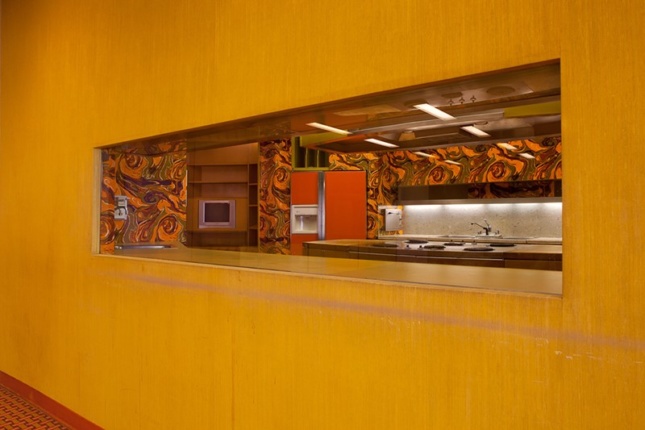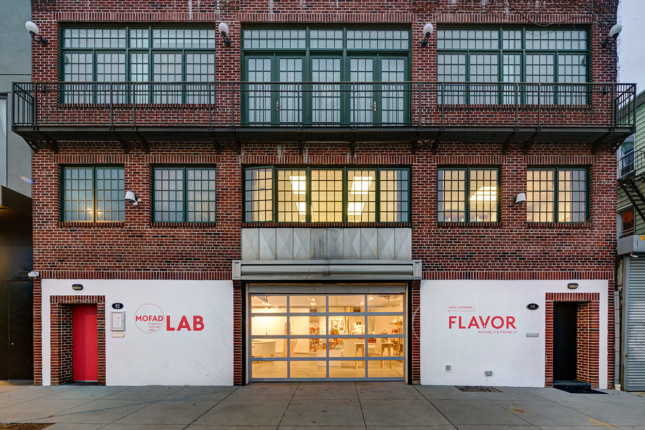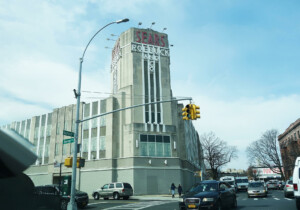The Museum of Food and Drink (MOFAD) in New York has been selected as the new owner of a salvaged psychedelic interior from the landmarked Johnson Publishing Building in Chicago.
Designed by local African-American architect John Warren Moutoussamy, the 11-story office building on Michigan Avenue was the longtime home of Ebony magazine, founded by John H. Johnson in 1945 as one of the first publications oriented towards African-American audiences. The magazine focused on black culture, celebrities, and leaders, but also explored politics and race issues throughout the 20th century. An especially popular feature was the cooking column by editor Charlotte L. Lyons, whose recipes were tested and photographed in the building’s custom-designed test kitchen, now headed to MOFAD.
After the magazine was purchased by Clear View Group in 2016, the headquarters was sold to Columbia College, who planned to use it as a new student center. However, as the plan lost momentum, the building was sold again, this time for redevelopment by 3L Real Estate in 2017. The developer is turning the old offices into residential apartments and the landmark protections do not extend to the interiors. The kitchen was slated for removal.
In advance of this planned residential conversion, however, a group of preservationists and volunteers from the not-for-profit organization Landmarks Illinois meticulously studied, documented, and preserved the space, placing its deconstructed components in storage. The group then published an RFP in February seeking a qualified institution that would be sensitive to the space’s history in order to best tell the public about the story of Johnson Publishing and the legacy of Ebony magazine from its inaugural 1945 issue to today.

Designed in 1971 by interior designers William Raiser and Arthur Elrodwood, the kitchen is composed of an oblong central island, wooden cabinets, and walls all covered with orange and purple marbled wallpaper. The yellow countertops are curved around the island, and custom appliances are often playfully integrated—a toaster can be pulled out from a nearly invisible nook in the wallpaper when needed, rather than sitting on the surface. The original 1970s appliances remained intact, complete with their orange and brown paneled surfaces to match.
As the winning institution, MOFAD plans to use the 70s-style marbled interior as the centerpiece for their upcoming exhibition, African/American: Making the Nation’s Table. Dr. Jessica B. Harris, the curator of the exhibition, said in a statement: “We seek to create the country’s first major exhibition to recognize how African Americans have laid the foundation for American food culture.”
Harris believes that the salvaged interior is “a perfect embodiment of this exhibition’s story.” Freda DeKnight’s cookbook and Lyon’s popular column were both celebrations of African-American culinary tradition that were shared with the world starting in Ebony’s kitchen.

The exhibition has been in concept planning since December of 2017, but the recent acquisition has become the centerpiece. Peter J. Kim, the museum’s director, included the image and news of the interior’s purchase in a May 22nd announcement calling for donations for the development of the exhibit. The bold yellow countertops are visible in countless vintage images from both the column and cookbook, but the swirly space and quirky appliances that will live on at the MOFAD welcome interaction with history and help tell the story of African American culture in America.











